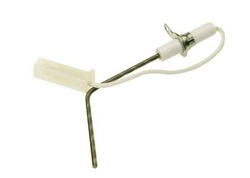- Home
- For the homeowner
- Safety
- Definitions
- Gas furnace
- Some error codes for gas furnaces
- Service sheet for the gas furnace
- gas furnace design
- The gas heat exchanger
- Dangerous conditions in gas furnaces
- Annual service of the gas furnace
- Repair procedures for gas furnaces
- Gas fireplace millivolt systems
- Oil furnace
- Setting gas input
- Quick tips for troubleshooting furnaces
- Troubleshoot
- Operation and troubleshoot furnace by manufacturer
- HVAC war stories blog
- Annual service of an oil furnace
- Oil furnace design
- Oil furnace troubleshoot
- Repair procedures for oil furnaces
- Gas code training
- Piping and connections
- FAG w pilot no fire
- Combustion analysis
- Electric furnace
- Air conditioner
- Refrigeration
- Heat Pump
- Boiler
- Ductwork design and troubleshoot
- Thermostats
- Diagnostic problems
- Tools
- Electric test meters
- Electrical diagram training
- Electrical symbols
- Single and 3 phase power systems
- Electric wiring solutions
- Transformer design and troubleshoot
- Electronic air cleaner
- Blowers and fans design & troubleshoot
- Humidity and humidifiers
- Furnace, Air Conditioner and part manuals
- Electric motors
- Run Capacitors
- Start capacitors
- Troubleshooting the capacitor
- Gas furnace short cycling
The gas furnace flame rod
|
|
|
Flame rectification as a flame proving method for gas furnaces

Flame rectification in a gas furnace is a method of proving flame exists by using electronics.
When alternating current is supplied to a probe that is within a flame the flame will rectify the current from alternating current to direct current.
To the left is a flame rod. It extends into the flame to sense it.
This part is normally located on the opposite side of the burners from the HSI.
The signal from the flame rod is sent to the IFC so it may prove or disprove the flame with electronics.
When alternating current is supplied to a probe that is within a flame the flame will rectify the current from alternating current to direct current.
To the left is a flame rod. It extends into the flame to sense it.
This part is normally located on the opposite side of the burners from the HSI.
The signal from the flame rod is sent to the IFC so it may prove or disprove the flame with electronics.
The video below shows the flame rod sensing flame in the burner
Flame rectification is an electronic function. This video shows why it does what it does.
more coming
